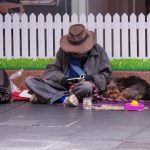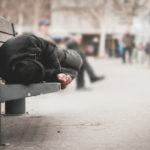Humanising Delhi’s Homeless: An Interview With Aashray Adhikar Abhiyan’s Param Jeet Kaur
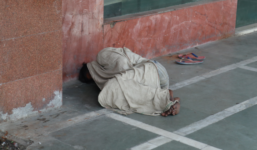
As Gagan approaches, she proudly announces that she’s currently doing a Bachelor of Arts at Delhi University. It’s not what one would necessarily expect to hear from a 19-year-old homeless woman living in a shelter for women in Delhi’s Karol Bagh area.
Kulwant, Gagan’s younger sister by a year, is currently in year 12 at high school, and their young brother Gumeet, at just 8 years old, is still able to live with them amongst the homeless women in the large room that makes up the sleeping area at Regar Pura Women’s Homeless Shelter.
The mother of the three siblings is homeless as well, but for various reasons lives elsewhere. And the trio have been living in the two-decade-old shelter for about 7 years now, sleeping amongst the two lines of beds positioned on either side of the room, along with the mostly older other residents.
Aashray Adhikar Abhiyan is the homelessness organisation that runs the shelter, whilst the Delhi government provides the building. And if it wasn’t for the work AAA has been doing since its founding in 2000, this shelter would not exist, and the three siblings would likely be on the street.
Upholding the rights of the homeless
AAA director Param Jeet Kaur, the nongovernment organisation commenced operations at the turn of the century, at a time when the fact that Delhi had a homeless population of around 100,000 wasn’t officially recognised. It was as if they were simply didn’t exist.
Aashray Adhikar Abhiyan, or the Shelter Rights Movement, changed all this. It conducted the first headcount of homeless people in 2,000, which provided factual proof of their existence, and it commenced a nightly outreach program and a free outdoor medical clinic.
Consisting of many previously homeless staff, AAA went on to demand that shelters be set up and petitioned the government for the use of empty buildings to use as accommodation. And it even had to convince officials that homeless women exist, a fact it had to go to great lengths to prove.
The organisation further put homeless people on the map by campaigning for their voter rights, which then gave them identification papers and provided a pathway to opening bank accounts and obtaining ATM cards, which are moves that saw them enter civil society and the official economy.
Decriminalising the homeless
Back in 2000, under local Delhi state laws begging was a criminal offence, which meant that all homeless people were criminalised. And a person with no fixed address didn’t have to be caught in the act of asking anyone for money to fall foul of this gaolable offence.
In 2019, the High Court of Delhi revoked the 1950s law that made the act of begging a crime, which meant police could no longer harass homeless people using this offence as justification, whereas before officers arrested people over a variety of actions that didn’t actually constitute begging.
Sydney Criminal Lawyers sat down with Aashray Adhikar Abhiyan director Param Jeet Kaur at the Katra Maula Baksh Men’s Homeless Shelter in Delhi to speak to her about how her organisation has significantly changed attitudes towards and upheld the rights of homeless people in her city.
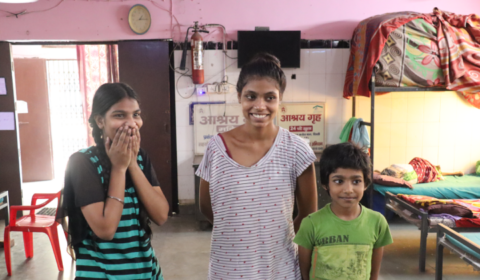
Ashray Adhikar Abhiyan, also known as the Shelter Rights Movement, has been a leading advocate for Delhi’s homeless people for over two decades now. The state you’re operating within has the highest homelessness rate in India.
Ms Kaur, how would you describe the homeless situation in Delhi at present?
Homelessness in Delhi is due to a lack of employment, acute poverty and distressed situations.
In elderly cases, it’s due to abandonment by family. Homelessness is due to the disintegration of family, and also, mental illness, which has a direct link with homelessness.
Many people leave their house because of mental illness, or they’re pushed out in some cases.
But it’s not a very black and white issue. Every individual has a different story to tell. So, all these reasons are behind homelessness.
Urban cities attract everyone, because they are the economic centres. But, due to the lack of physical infrastructure and suitable employment, the homeless are just pushed out.
What sort of figures are we talking about in terms of people experiencing homelessness in this city?
About one percent of the population is homeless. In Delhi, we are the organisation that conducted the first ever headcount of the homeless back in 2000.
In 2001, we published the data, which was accepted by the government. We found there was half a lakh, or 52,755 people within a time frame of 15 days.
But it’s thought we missed many. And the estimate was thought to be more like one lakh out there or 100,000 people.
Today, we still say it’s one percent of the population, and if we go by this formula, there must be 1.5 lakh minimum in Delhi.
Broadly speaking, how would you say the general public considers the homeless?
They don’t see them with respect, and they don’t accept them. There is not much acceptance of them.
Here in Delhi, the majority constitute a working population between 18 to 45 years old. And the homeless don’t receive sympathy or empathy from the general public.
Has the work you’ve been doing over the last two decades changed attitudes?
Yes. When we started, this word “homelessness” was non-existent in policy documents or in state documents. The word was not there. But now it’s very popular.
So, society now knows that people are homeless. And especially, in winter everybody will come out with blankets. But again, the perception is that homelessness is only an issue in winter. They come out with the woollens, and then they forget about them. There is not that much sensitivity.
But for a long while now, the state has accepted what was our vision originally, which was that the state should be made accountable for the lives of these people.
So, the state has made provisions for these homeless shelters over the years. We opened abandoned buildings, which weren’t being used, as shelters. Initially, they were night shelters. Now it’s moved to 24-hour shelters.
The state has now accounted for the homeless in policy documents. So, there is this word “homelessness”.
In the masterplan of urban development in Delhi, they have mention of homelessness. And even the courts have judicially accepted there are homeless. And in 2013, Delhi’s model was accepted in many other cities.
AAA was founded in 2000. The AAA team is quite large with a range of differing roles. How would you describe what your organisation does?
We started as a movement that involved homeless people. It was run then, and it is still being run, by homeless people.
These people who were just outside the margins of civil society, were involved and are still involved in the management of the overall program.
So, this organisation is a people’s organisation.
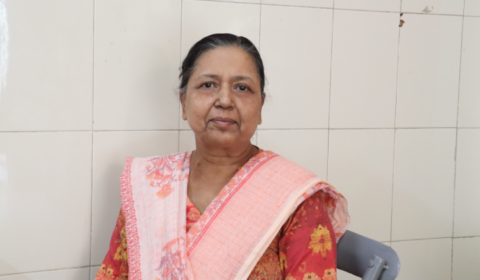
AAA commenced a night outreach program and a health clinic in 2000. How are they operating today?
The night outreach program is still going, but the health clinic, since COVID, is on hold, because of the pandemic guidelines.
The hospital that we have an association with is not ready to come out because they haven’t got any instructions from the government that people can operate in this way.
With the outreach, we go out and identify people and rescue them. A group of staff members go out walking looking for people. They walk about 5 to 10 kilometres.
They know the usual spots where they encounter them. Then they counsel them, bring them to the shelters, assist them and listen to them in whatever their needs and problems are. So, they build relationships with them.
At least, these people then have this feeling and satisfaction that there is someone supporting them. After they come here, they’re no longer alone, because when they came here, they were all alone.
In Delhi, people come from all over. So, they’re out of their community support, and after reaching here, they have nobody to mentor or support them. So, this is what we do.
AAA advocates for the rights of the homeless. How would you describe the rights that the homeless have upheld under the law, and which would you say are violated?
This has been a long journey. Once a homeless person comes here, he was not always a homeless. He has come from some native place. He has left some family. He has some roots. They are not rootless people.
But when they reach Delhi bus station, they become rootless. So, now he is left to live under the open sky. He is not considered a citizen by the state because he is not enrolled in the voter list.
Citizenship rights end when they leave their house, when they arrive at the station, and when they leave here.
This is especially to do with the identity issue. He has no identity. He might be having a house somewhere else but here he is all alone and he is no one in the state’s regard.
Why? Because he’s just a guest. He has a money problem. He doesn’t have a house. There is no one to help him find a house. So, he is on the street.
But now it is an easy thing for them to get enrolled in the voter list, because we made lots of efforts in Delhi with the Election Commission office. So, they now accept their street address, as the shelter. We were the first organisation to achieve this voter ID arrangement.
So, that was the beginning of citizenship rights. That was the beginning of accessing other rights as well. With that it opened the path to accessing other rights. They were able to get an ATM card. So, their financial inclusion was started.
Earlier, they used to be exploited by the employer or by a friend, a cohabitor, on the street. They would ask them to keep their money safe, but then it was taken. So, they used to get cheated.
With the opening of a bank account, they can save money of their own, and send this money directly to their family.
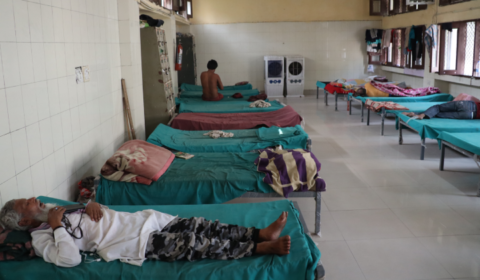
So, are we just talking about the people staying in the shelter or are we talking about all the people in the streets?
They all have rights on the streets. But they are also pushed from one place to another place. Drugs are one of the reasons for people not coming to the shelter.
There is a punctuality to the way one lives here. We don’t allow drug consumption inside the complex. Outside they can. Alcohol is almost a 90 percent problem amongst the homeless.
So, that is also one of the reasons they don’t come to the shelters.
But they know. We keep on telling them around the year that these facilities are available. We tell them they have free access to them. And we pass on the knowledge that outside there are hazards during all the seasons.
Even in summer here it’s too hot outside. It is 45 degrees. So, it’s not easy to stay out there.
Drugs are a main reason why people don’t come here. The second is independence, that they like their freedom on the streets.
And a further reason why people stay on the street and don’t enter the shelter is because they’re part of a family. Family shelters are few. And if they enter a shelter, they have to be split up.
Your organisation was part of the campaign to see begging decriminalised in 2018. Was that offence being enforced prior to decriminalisation? And what’s the impact been since the offence was removed?
Begging was a crime in the eyes of the law until 2018. So, we had a legal unit. We started a legal unit.
We found a number of ways that homeless people were being exploited. The first was citizenship. They had no identity and we started giving out our own ID cards to them.
The second issue was health access. Government or public hospitals turned them away. But they could then show that they had an address, because before the hospitals would say, “You are not a citizen of Delhi. You are dirty. Go away.”
So, we started a clinic out in the open. And when the government hospitals saw that clinic, they could no longer refuse the people treatment.
The third issue is police brutality on the street. They were using a stick on them. The power of the stick.
Then the other one was beggary. These people are homeless, as they are not regular workers. If there was a charity of monthly income, they would hire a room somewhere for a small sum.
But due to erratic income, they are not sure of where they will stay. So, when there is no surety of income or a place to stay, they will go to the places of spirituality – gurudwaras, temples, mosques – in search of food.
But if they go out somewhere and informally set up a place to stay, suddenly there would be a raid. And surprisingly, the raid team belongs to the Department of Social Welfare. They go in and capture them.
The police would then take them to the Magistrates Court. Then when they would go before the court, he or she would be charged with the crime of begging.
She might say she was not begging. But the court would take sitting at places waiting for alms or having a monkey show or trying to sell gemstones or doing astrology: all these acts were included in the offence of begging, even though it was economic activity.
So, that was the scenario. So, then we found a constitutional lawyer in 2002 to become part of our team of legal lawyers. And we used to defend those people with the legal system. And when they got beat by the charges, the term of imprisonment was up to three years.
And although imprisonment was a rehabilitation act, the rehabilitation acts were not proper.
So, we kept trying until 2012. And after that, we filed a petition in this state that begging shouldn’t be criminalised. And now there is no such law existing in Delhi and the raids no longer occur.
So, people can sit. They can go wherever they want. They can eat. They can go outside in search of things.
So, before the law changed, if you were homeless you were regarded as a criminal?
Yes. It was like that.
Overall, how would you say AAA has impacted over the time it’s been operating?
In terms of the many items we have discussed, one is the right to identity. Then health access and access to financial assistance. And moreover, society has become aware of this issue.
The masterplan has included this word homeless, and also included that there should be one shelter for each lakh (100,000) population in Delhi.
And finally, the system of shelters. There was no place for centre management. All the work used to be done by us. Even the buildings were being given by us.
Now, buildings are being opened. In winter, we used to run around asking for people to please open the buildings. The government used to say, “Okay, which places do you want?”
But that has been taken over now. We have given them their own map for a winter plan. And these shelters during the winter are only open at night time.
Another thing was there was no acceptance that there were women on the street. They would say there are only men. So, we showed the government. We collected women from the street to show them.
But they would say, “No. There is no reason for a women’s shelter, you have already opened so many other shelters.”
So, we created a shelter for women with the help of other NGOs by forming a group. Some gave us land. The YMCA gave us a structure. And we opened the shelter. And the food was given by the local gurudwara: the Sikh temple.
The first one had about 22 women. We invited the politicians and bureaucrats to show them that there were women there and this was the first women’s shelter. So, we had to prove that.
We have been following an evidence-based policy. We create evidence on the street. Then we did advocacy. We derived all our advocacy work from field work.
We struggled a lot on the street. Now, there are 20 shelters for women, which is still less in number, as there are 196 men’s shelters. That’s within nine districts.
There are some family shelters as well. But there are fewer family shelters.
So, the state has now accepted there are homeless people, including homeless women. And the High Court and the Supreme Court have accepted the homelessness issue.
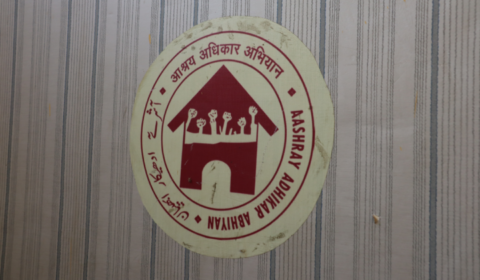
And lastly, Ms Kaur, after over two decades of operating on the ground in Delhi, what would you say is the goal for AAA now? What further changes and reforms does your organisation hope to achieve?
Now the government has started giving shelters on a tender basis. We have taken two tenders. So, the third tender is going to be next month. So, we’ll see if we can get that account, because they give them to the lowest bidder, which is not economically viable for us.
So, our focus is back to the street again, because we are used to working directly with the people.
We will keep working on this, but we are reduced because we have only nine shelters now. We used to have 100 shelters.
We are now focusing again more on the street and the people who are still left out, with the aim of making them a more respectable citizen in Delhi.
Skill development and mental health are key features. Because mental illness causes homelessness, but homelessness also leads to mental illness.
And during the pandemic, when all of the city was inside, we were literally outside. You would only see a few people: the police and us. There was nobody else. All the shops were closed.
We used to feed about 2,000 here a day. We had about 3 or 4,000 people a day.
Many of them were mentally ill. But around these 2 years of the pandemic, we got around 300 people who were mentally unstable treated by a mental health institute, and we got them rehabilitated and reunited with their families.
We would like to have more of a focus on mental illness, because there are many destitute with mental illness and nobody cares about them.
We started this work in 2001. The first work that we did was in regard to mental illness among homeless people.
Many women out there on the stations, they don’t know where they are. Many elderly people are out there with nowhere else to go. And there are children out there as well.
Income generation, skills training, health and reuniting are a focus, because we don’t want the people to stay away from their homes: our objective is to reduce homelessness.


